June 3, 2025 | 10:44 GMT +7
June 3, 2025 | 10:44 GMT +7
Hotline: 0913.378.918
June 3, 2025 | 10:44 GMT +7
Hotline: 0913.378.918
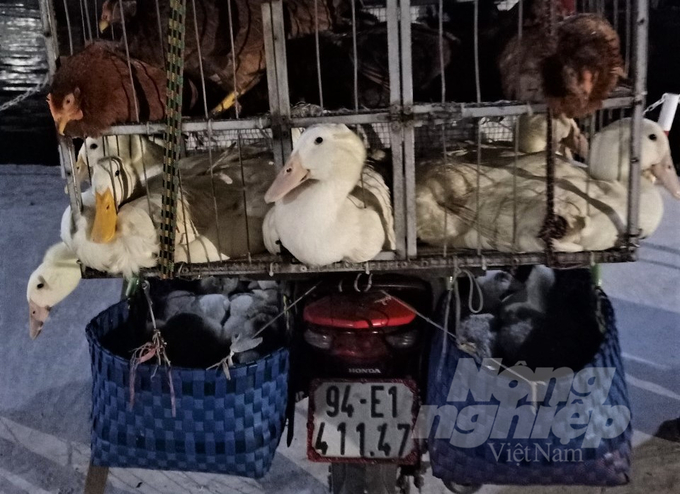
Risk of spreading influenza A/H5N1 disease from motorbikes transporting poultry not following epidemic prevention conditions. Photo: Trung Chanh.
Kien Giang province shares a 56-km border with Cambodia. The border lies in the territory of Ha Tien city and Giang Thanh district, with 2 border gates, multiple trails, openings between residents on both sides of the border, so the risk of smuggling and illegal transportation of poultry into Vietnam is extremely high. Prey Veng province, Cambodia has recently reported one human death due to the avian influenza virus A/H5N1 transmitted from poultry.
After the Ministry of Agriculture and Rural Development issued Urgent Dispatch No. 1030/CD-BNN-TY dated February 26, 2023 on preventing the illegal importation and transportation of smuggled poultry and poultry products into Vietnam, Kien Giang province has initiated the system, strengthening the control of the border.
Mr. Nguyen Dinh Xuyen, Deputy Director of the Kien Giang Sub-Department of Livestock Production and Animal Health, said that the province currently houses a flock of approximately 5.7 million poultry, including over 3.6 million chickens, the remaining is duck. So far, no cases of avian influenza in humans or poultry were reported in Kien Giang province or the Mekong Delta region.
However, according to Mr. Xuyen, the majority of poultry in the province is currently farm-raised, dispersed, and biosecure breeding conditions are limited so it is difficult to vaccinate on a wide scale. The uncontrolled trading and slaughtering of live poultry at marketplaces is still common. Some districts and communes have not established centralized slaughterhouses.
Avian influenza A/H5N1 is a highly virulent, dangerous strain, capable of infecting humans and causing death. As a result, the risk of infection, generation and spread of avian influenza A/H5N1 as well as other dangerous strains of influenza virus in the province's poultry flocks is very high.
Kien Giang Department of Agriculture and Rural Development organized a meeting with the provincial veterinary force to carry out epidemic prevention and control measures. A delegation was also assigned to inspect the prevention of illegal import of poultry and poultry products on the border roads. Functional forces have strengthened control and strictly handled cases of illegal poultry transport at Ha Tien and Giang Thanh border gate animal quarantine stations; subsequently, illegal consignments were destroyed according to regulations.
It is estimated that at least 400 people enter and exit through Ha Tien International Border Gate every day. Immediately after receiving reports that avian influenza A/H5N1 outbreaks have occured in Cambodia, Ha Tien International Border Gate Border Guard Station have directed stations, teams and checkpoints on the border line to strictly control the border, prevent livestock and poultry products to be smuggled into Kien Giang.
Colonel Nguyen Duc Dinh, Head of the Border Guard Station at Giang Thanh border gate, reported that: "Roughly 200 to 250 people enter and exit through Giang Thanh border gate every day. The station has strengthened inspection and control to prevent people from illegally transporting poultry across the border, and deployed disinfection of people and vehicles".
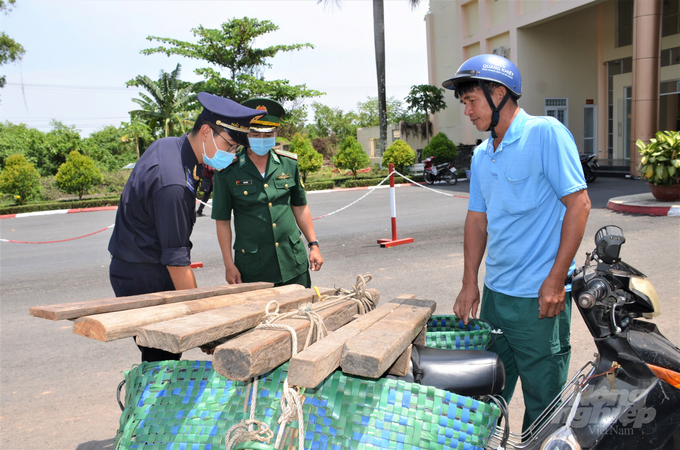
The Customs force coordinated with the Border Guard to inspect people and goods passing through the Ha Tien international border gate. Photo: Trung Chanh.
Mr. Le Huu Toan, Deputy Director of Kien Giang Department of Agriculture and Rural Development, said that although no outbreak of avian influenza A/H5N1 in the area was reported, based on the risk assessment, disease outbreaks are extremely likely. The agricultural sector must urgently implement measures in accordance with the current situation to prevent future outbreaks.
Accordingly, the most effective measure is to accelerate the vaccination of poultry flocks. The Department has directed the Provincial Sub-Department of Livestock Production and Animal Health to be fully prepared with vaccines and equipment, coordinate with local governments to strengthen the grassroots veterinary staff, organize avian influenza vaccination and additional vaccination when new poultry is born in order to achieve early vaccine coverage.
Information must also be disseminated for farmers to understand the current epidemic situation as well as the dangers of avian influenza to human health, so that they can cooperate in epidemic prevention and control.
Consequently, the Sub-Department must actively coordinate with the grassroots veterinary staff in vaccinating poultry flocks, applying biosecurity measures in livestock production; regularly disinfect and sterilize cages to effectively prevent diseases for poultry flocks; promptly report abnormal deaths of poultry; warn people against concealing disease, and the trade and transport of smuggled poultry.
The prevention of epidemics in livestock and poultry and the prevention of avian flu from spreading to humans is under urgent implementation of Kien Giang's authorities. Mr. Trinh Hung Cuong, Deputy Director of Hau Giang Sub-Department of Livestock Production, Animal Health and Fisheries, said that although the province is located in the center, sharing no border with other countries, disease prevention and illegal transportation of poultry cannot be ignored.
Accordingly, localities bordering Cambodia including Vi Thanh city (bordering Kien Giang province), Nga Bay city (bordering Soc Trang), Chau Thanh and Chau Thanh A districts (bordering Can Tho city), etc. have strengthened the inspection of livestock and poultry transport through the area.
Namely, Hau Giang Sub-Department of Livestock Production, Animal Health and Fisheries regularly maintains a checkpoint to inspect livestock and poultry traveling through the province at Cai Tac, the main gateway into the province.
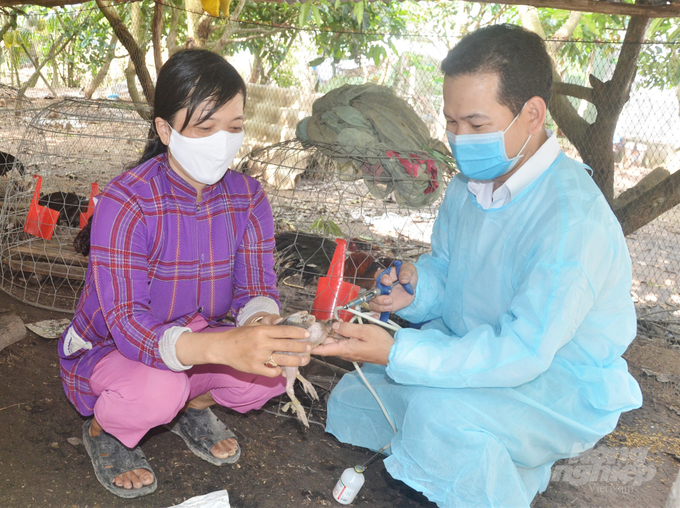
Veterinary staff in Kien Giang performing avian influenza vaccination for the poultry flocks. Photo: Van Vu.
Mr. Dang Ngoc Giao, Deputy Director of Hau Giang Department of Agriculture and Rural Development directed the veterinary force to closely monitor the disease in poultry flocks to promptly detect and thoroughly handle outbreaks as soon as they appear; notify and coordinate with the Center for Disease Control of Hau Giang Province in implementing measures to prevent the transmission of influenza A/H5N1 virus to humans.
Moreover, the veterinary force will coordinate with relevant agencies, strengthen quarantine management, control the transportation of poultry and poultry products; strictly handle cases of trading, transporting, slaughtering poultry and processing poultry products that do not meet the requirements for disease prevention and control.
Barriers at border gates
Colonel Nguyen Van Tung, Head of the Ha Tien International Border Gate Border Guard Station, said: "Everyone entering the border must pass through a heat sensor. People from epidemic-affected locations are subject to strict monitoring for avian influenza. If fever cases are detected, they will not be allowed to proceed with the immigration procedures. All goods including livestock, poultry and products from cattle and poultry, must provide a quarantine certificate issued by an appropriate party when passing through the border gate".
Translated by Nguyen Hai Long
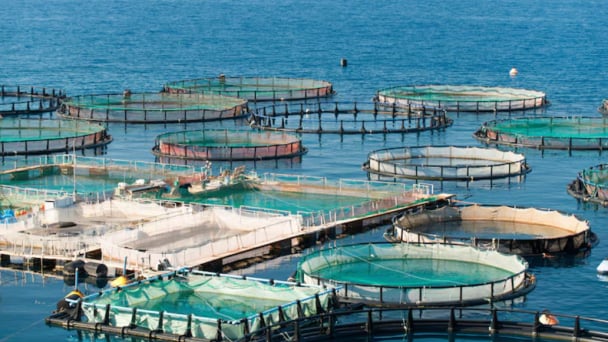
(VAN) Technology is redrawing the map of Vietnamese aquaculture: more modern, greener, and more sustainable.
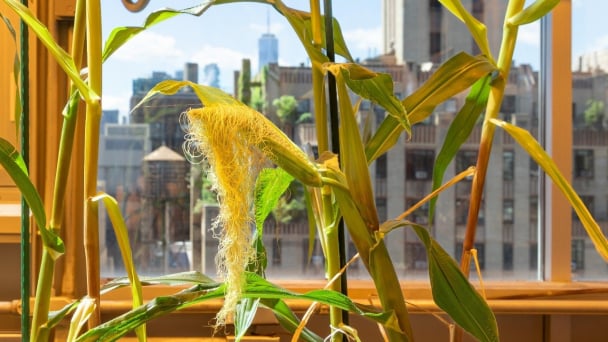
(VAN) Novel process harnesses machine learning to reveal groups of genes that determine how efficiently plants use nitrogen.

(VAN) Several scientists and farmers are experimenting with soil treatment in some key durian-growing regions such as Cai Lay (Tien Giang), Dak Song, Gia Nghia, and Dak R’lap (Dak Nong).
/2025/05/25/4127-3-073637_820.jpg)
(VAN) Thanks to the promotion from an FAO-implemented project, vegetable production in greenhouses in Moc Chau has seen strong development, from 1.5 hectares in 2021 to nearly 50 hectares in 2024.

(VAN) FAO has recently supported USD 140,000 to implement the project 'Risk mitigation human-animal interface risks through disease control initiatives in pig farming.'

(VAN) The People's Committee of Tra Vinh province has approved an adjustment to the investment policy for the Green Hydrogen Plant project, increasing its area to approximately 52.76 hectares.
![Reducing emissions from rice fields: [2] Farmers’ commitment to the soil](https://t.ex-cdn.com/nongnghiepmoitruong.vn/608w/files/news/2025/05/05/dsc08881jpg-nongnghiep-140632.jpg)
(VAN) Clean rice cultivation model in Thuong Tan commune, Bac Tan Uyen district, is assisting local residents in achieving sustainable agriculture by substantially reducing costs, increasing productivity, and protecting the environment.